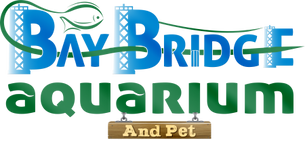Family: Gasteropelecidae
Common Name: Dwarf Hatchetfish
Origin and Habitat: Peruvian Amazon basin. Found in small, shaded and shallow woodland streams in the forest that are slow flowing, and in flooded forest during the wet season.
Compatibility/Temperament: A peaceful, sensitive fish, must be in groups minimum six but preferably more. May be kept with very peaceful small fish such as the smaller characins, pencilfish, other hatchetfish species in Carnegiella, Corydoras, Farlowella vittata, Rineloricaria sp, dwarf loaches, dwarf cichlids, rasbora including the dwarf species in Boraras.
Size
Attains 2.6 cm (~1 inch).
Minimum Tank Suggestion
10 gallon, but better in a larger group in a tank of 24 inches in length.
Water parameters for Dwarf Hatchetfish
Soft (hardness less than 4 dGH) slightly acidic (pH 5.5 to 6.5) water, temperature 23-27C/73-81F. Available fish will be wild caught.
Dwarf Hatchetfish Diet
Feeds primarily on insects that are on or land on the water surface. Will accept most prepared foods that float; wingless fruit flies and small ants are ideal live foods.
Description
The hatchet fishes are surface fish identified by their rounded keel. The large pectoral fins are attached by powerful muscles that propel the fish from the water, enabling it to glide considerable distances through the air. Studies by Francine Weist (1995) concluded that the pectoral fins are not moved during this "flight" but are used as a powerful thruster to propel the fish from the water as well as to prevent the fish from diving too deeply upon its return to the water [reported in Weitzman & Palmer, 1996].
This fish remains almost exclusively right at the surface. The aquarium must be well covered, and careful attention during maintenance is necessary as the fish will quickly jump if alarmed or frightened. The tank should be well planted and contain branches and bogwood; floating plants are mandatory, but leave some space for the fish to swim. This species, like all the Carnegiella hatchet fish, is very social, and frequent games of the tag will occur when the fish is settled. Newly-imported fish are very sensitive and must be carefully acclimated but once established they are hardy. These fish will not do well in water that is not soft and acidic.
The species in Carnegiella are the smallest of the hatchet fishes and show geographic variations according to the locality. The subject species is almost identical to C. marthae, and very recent work by Piggot et al. (2011) has suggested there may be 3 species within the C. marthae group. The smallest species, C. myersi, is also basically silvery in coloration but has a shallower keel which gives it the appearance of greater length than it actually is. The marble hatchet fish, C. strigata, is the fourth (to date) species in the genus.
The family Gasteropelecidae contains three genera: Thoracocharax with two species, Gasteropelicus also with two species [G. levis is possibly a third species (Weitzman & Palmer, 1996)] and the four recognized species in Carnegiella; the latter are the most derived or specialized of the hatchet fishes. Weitzman & Palmer hypothesize on the basis of their anatomy that these three genera had a common ancestor in the distant past that was related to some other characiform subgroup.
References:
Piggott, Maxine P., Ning L. Chao and Luciano B. Beheregaray (2011), "Three fishes in one: cryptic species in an Amazonian floodplain forest specialist," Biological Journal of the Linnean Society, 2011, Volume 102, Number 2, pp. 391-403.
Weitzman, Stanley H. and Lisa Palmer (1996), "Do Freshwater Hatchetfishes Really Fly," Tropical Fish Hobbyist, September 1996, pp. 195-206.
Weitzman, Stanley H. and Lisa Palmer (2003), "Family Gasteropelecidae," in Checklist of the Freshwater Fishes of Central and South America, ed. Roberto E. Reis, Sven O. Kullander and Carl J. Ferraris; Porto Alegre: Edipucrs, pp. 101–103.
Wiest, F.C. (1995), "The specialized locomotory apparatus of the freshwater hatchetfish family Gasteropelecidae," Journal of Zoology, No. 236, pp. 571-592.
Contributing Members
The following members have contributed to this profile: Byron
Common Name: Dwarf Hatchetfish
Origin and Habitat: Peruvian Amazon basin. Found in small, shaded and shallow woodland streams in the forest that are slow flowing, and in flooded forest during the wet season.
Compatibility/Temperament: A peaceful, sensitive fish, must be in groups minimum six but preferably more. May be kept with very peaceful small fish such as the smaller characins, pencilfish, other hatchetfish species in Carnegiella, Corydoras, Farlowella vittata, Rineloricaria sp, dwarf loaches, dwarf cichlids, rasbora including the dwarf species in Boraras.
Size
Attains 2.6 cm (~1 inch).
Minimum Tank Suggestion
10 gallon, but better in a larger group in a tank of 24 inches in length.
Water parameters for Dwarf Hatchetfish
Soft (hardness less than 4 dGH) slightly acidic (pH 5.5 to 6.5) water, temperature 23-27C/73-81F. Available fish will be wild caught.
Dwarf Hatchetfish Diet
Feeds primarily on insects that are on or land on the water surface. Will accept most prepared foods that float; wingless fruit flies and small ants are ideal live foods.
Description
The hatchet fishes are surface fish identified by their rounded keel. The large pectoral fins are attached by powerful muscles that propel the fish from the water, enabling it to glide considerable distances through the air. Studies by Francine Weist (1995) concluded that the pectoral fins are not moved during this "flight" but are used as a powerful thruster to propel the fish from the water as well as to prevent the fish from diving too deeply upon its return to the water [reported in Weitzman & Palmer, 1996].
This fish remains almost exclusively right at the surface. The aquarium must be well covered, and careful attention during maintenance is necessary as the fish will quickly jump if alarmed or frightened. The tank should be well planted and contain branches and bogwood; floating plants are mandatory, but leave some space for the fish to swim. This species, like all the Carnegiella hatchet fish, is very social, and frequent games of the tag will occur when the fish is settled. Newly-imported fish are very sensitive and must be carefully acclimated but once established they are hardy. These fish will not do well in water that is not soft and acidic.
The species in Carnegiella are the smallest of the hatchet fishes and show geographic variations according to the locality. The subject species is almost identical to C. marthae, and very recent work by Piggot et al. (2011) has suggested there may be 3 species within the C. marthae group. The smallest species, C. myersi, is also basically silvery in coloration but has a shallower keel which gives it the appearance of greater length than it actually is. The marble hatchet fish, C. strigata, is the fourth (to date) species in the genus.
The family Gasteropelecidae contains three genera: Thoracocharax with two species, Gasteropelicus also with two species [G. levis is possibly a third species (Weitzman & Palmer, 1996)] and the four recognized species in Carnegiella; the latter are the most derived or specialized of the hatchet fishes. Weitzman & Palmer hypothesize on the basis of their anatomy that these three genera had a common ancestor in the distant past that was related to some other characiform subgroup.
References:
Piggott, Maxine P., Ning L. Chao and Luciano B. Beheregaray (2011), "Three fishes in one: cryptic species in an Amazonian floodplain forest specialist," Biological Journal of the Linnean Society, 2011, Volume 102, Number 2, pp. 391-403.
Weitzman, Stanley H. and Lisa Palmer (1996), "Do Freshwater Hatchetfishes Really Fly," Tropical Fish Hobbyist, September 1996, pp. 195-206.
Weitzman, Stanley H. and Lisa Palmer (2003), "Family Gasteropelecidae," in Checklist of the Freshwater Fishes of Central and South America, ed. Roberto E. Reis, Sven O. Kullander and Carl J. Ferraris; Porto Alegre: Edipucrs, pp. 101–103.
Wiest, F.C. (1995), "The specialized locomotory apparatus of the freshwater hatchetfish family Gasteropelecidae," Journal of Zoology, No. 236, pp. 571-592.
Contributing Members
The following members have contributed to this profile: Byron
Attachments
-
8.2 KBViews: 252


